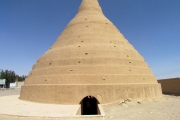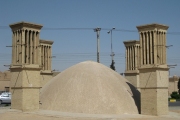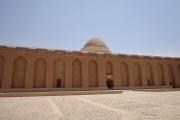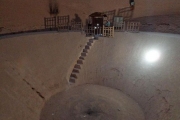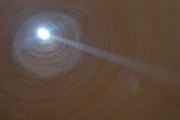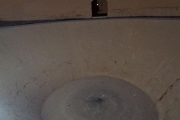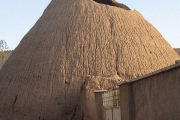|
Viewings: 25202
Before it was invented fridge, its functions were performed in the ice, which was considered a precious commodity that was not so easy to obtain, or to do, especially during the summer. To save meat and other products, huge chunks of ice transported in the South of the country from the Scandinavian countries in the Arctic Circle, or on mountain tops. In the UK and other European countries, used ice from Norway. In Russia gathered ice along the river Neva, while the Indians used the reserves of the Himalayas. Precious commodity was kept in specially built buildings, named ice buildings, where the cold was kept during the whole year. In this article we will tell not only about the history of these houses, but also of the ancient architecture of Iran, which also used this technology save the cold.Ancient architecture of Iran really deserves attention, for example, we already wrote about the bridge Cheju, which is considered one of the most beautiful in the world. The most common projects included underground chamber, usually artificial, which were built close to natural sources of winter ice, such as the freshwater lake. During winter ice and snow were placed in the ice house was filled with insulation, such as straw or sawdust. It helped them to remain frozen for many months, often until next winter. During the month, this store has become a great source of ice and cold. In summer, the ice house can be cool drinks, or to make ice cream and desserts from sherbet. Ice houses were known in Iran is already in the seventeenth century BC, they come out of the use of only 50 years ago. Many disused egg-shaped structures made of clay bricks, preserved in Iran to the present day . Iranian ice building a giant in size, compared with that found in the West. They also unique because of the way that was obtained ice. Iran is mostly desert, where water is rare even in winter, when the temperature falls below zero at night, and once again it is the heat. A huge amount of ice were needed to fill these large, dome-shaped wells, and they could not be transported from distant places. Inventive Iranians, instead, made my own ice. Behind each "refrigerator" there were numerous smaller canals, where during the winter nights poured water. Channels are protected from high temperatures during the day shadow of the walls. At night a thick layer of ice has formed on the surface. Then he broke down, gathered and moved in the ice of the building before the sun rose. Every night this process was repeated until there were collected enough ice in the summer season. Several special walls, deep wells and cleverly constructed domes never missed a high temperature inside and kept the ice. More than a hundred ice houses can be found throughout Iran, but very few exist in the original form and full. If not will be made concerted efforts to restore and preserve, most of them may not all be saved. Some disused glaciers have already been used as waste dumps.  Com-Eva: 0 Com-Eva: 0
You are reading news Ледяные дома Ирана
if You liked the article Ледяные дома Ирана,
prokomentiruet her.
|
The world of the unknown - Onua.org
Onua.org - this site created to familiarize the user with the world of the unknown, news of technology, space discoveries and mysteries of the Earth UFO, Video , Photo, the Witnesses, the mysteries of history and ancient civilizations.
Menu
- Anomalies
- Hypothesis
- The Mysteries Of History
- Unknown
- News
- Opening
- Top secret
- Prophets
- Ancient civilizations
- Egypt
- Rome
- Greece
- Anunaki
- Nazca
- Maya
- Cosmos
- Technology
- Flora and Fauna
- Atlantis
- Bermuda triangle
- Aliens and UFOs
- Cloning
- Loch Ness
- Mysticism and Magic
- Time machine
- Parallel world
- The Tunguska meteorite
- Third Reich
- Teleportation
- Snow man
- 2012
- Nibiru
- Solar system
- The sun
- Earth
- Mars
- The rest of the planet
- Photo
- Video
- A little about everything
- Украинские аномалии
- 2013-2014 YEAR
- Questions and answers
- 100 great
Interesting
Recent VIDEOS
News calendar
Join
Popular Onua.org
Photo

The biggest fish in the world - not blue whale as one might think, because the whale belongs to a ma

Before it was invented fridge, its functions were performed in the ice, which was considered a preci
Предлагаем восстановить, заказать, купить диплом Вуза в любом городе России. Только настоящий бланк ГОЗНАК с гарантией.













